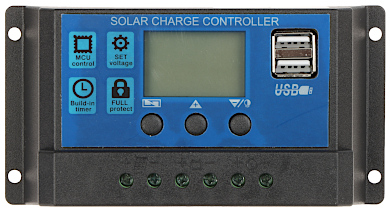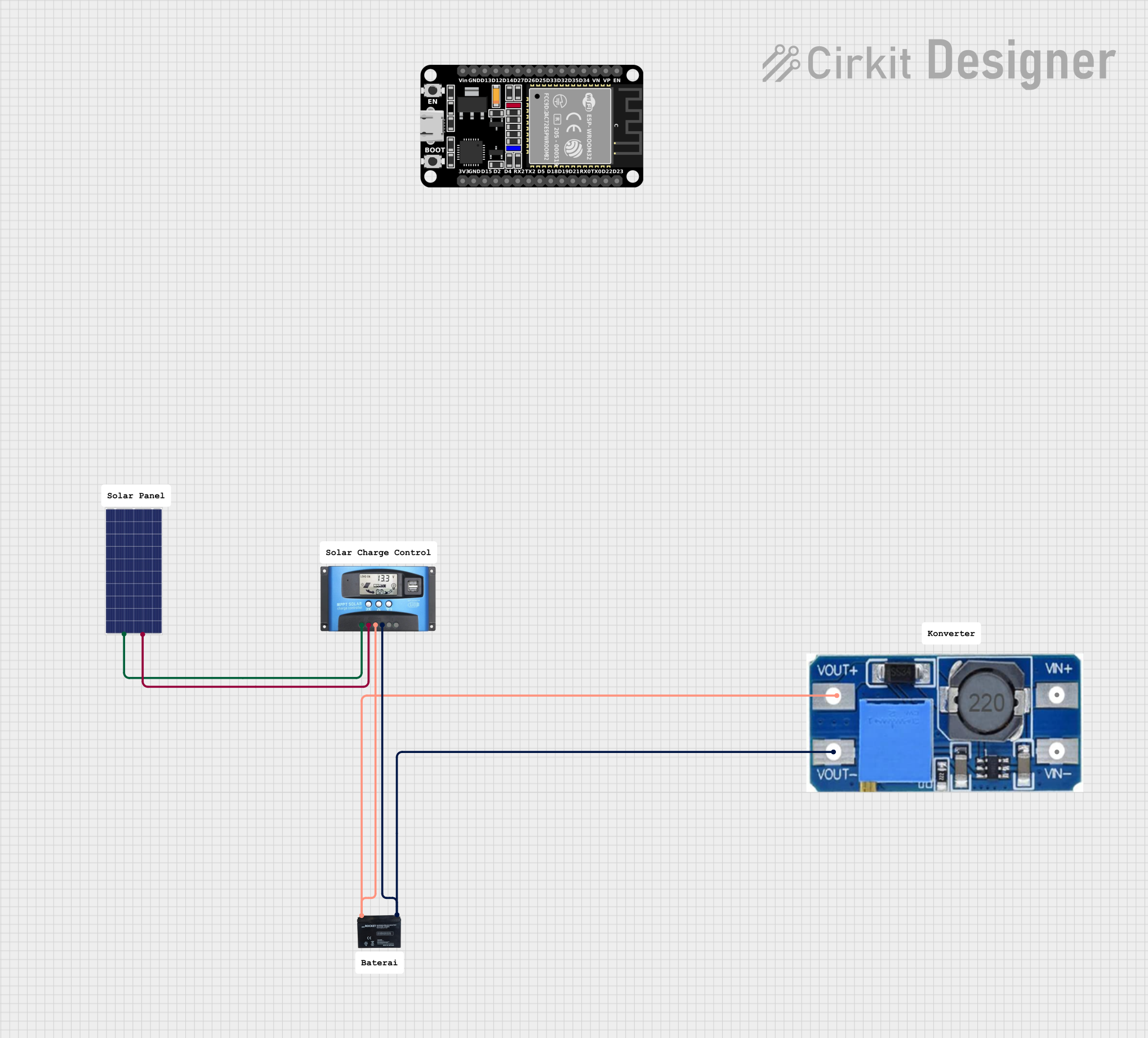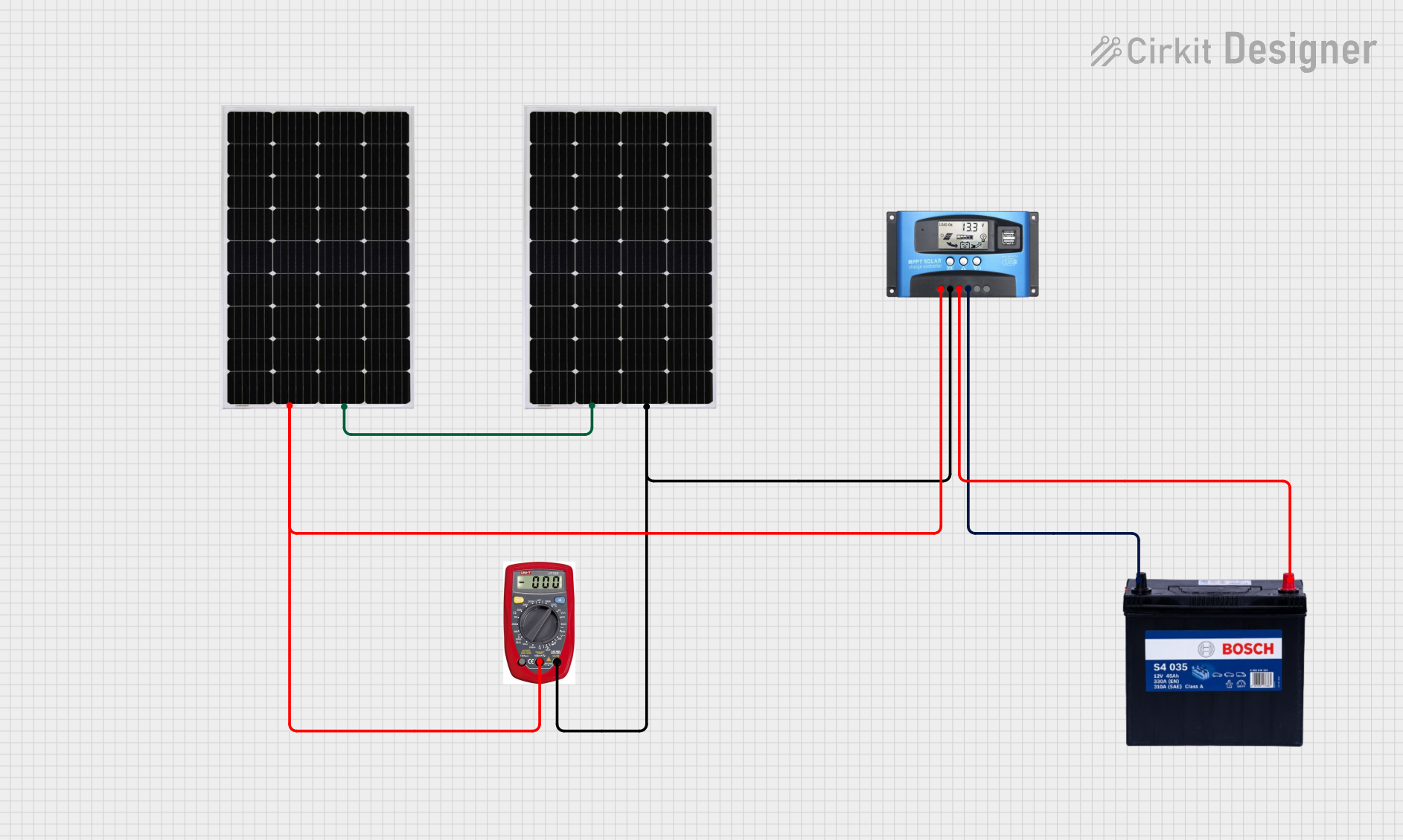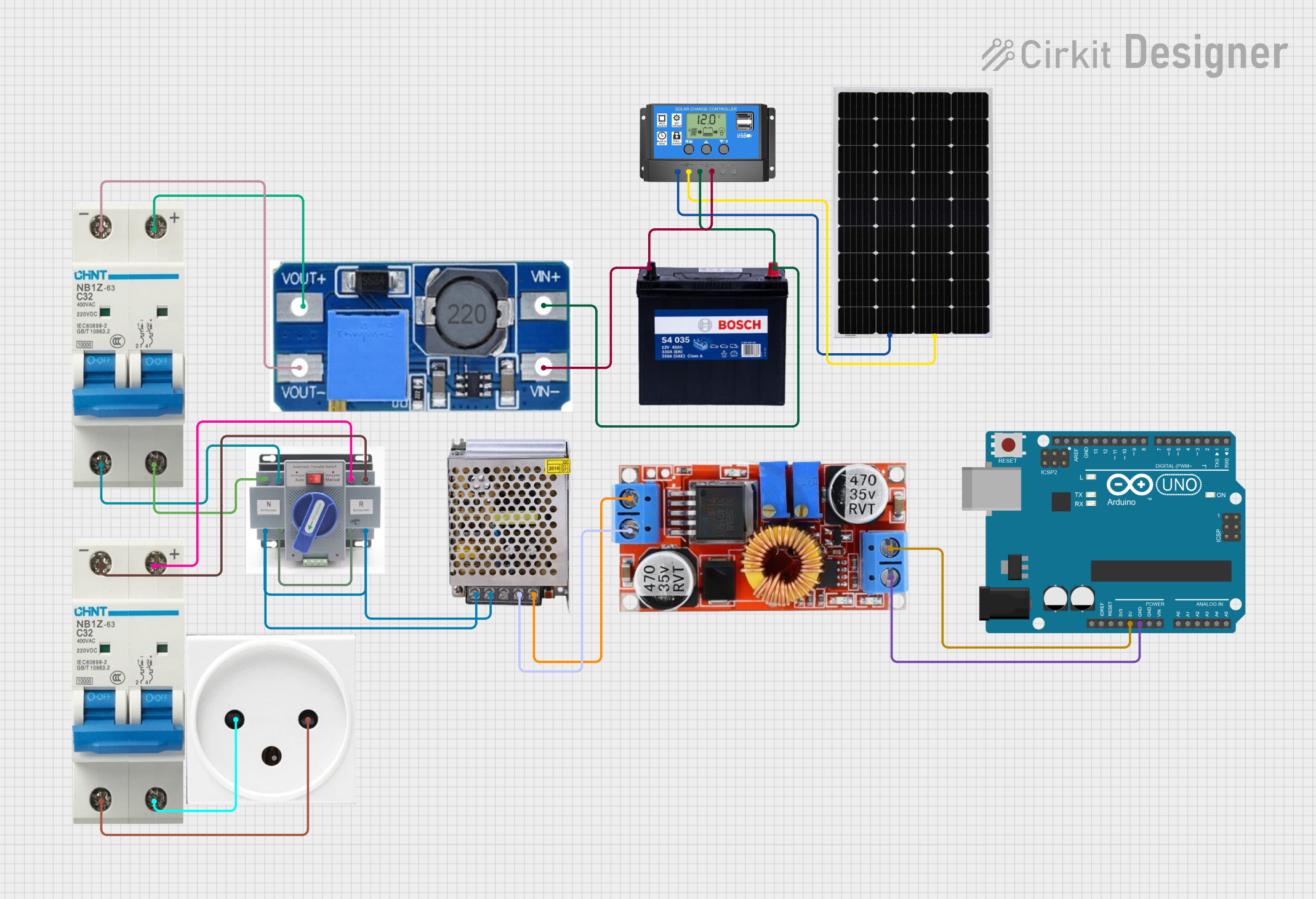
How to Use Solar Charge Controller (SCC) : Examples, Pinouts, and Specs

 Design with Solar Charge Controller (SCC) in Cirkit Designer
Design with Solar Charge Controller (SCC) in Cirkit DesignerIntroduction
The Solar Charge Controller (SCC), manufactured by Solar Pnael, is a critical device in solar power systems. It regulates the voltage and current generated by solar panels to prevent overcharging of batteries, ensuring their optimal performance and longevity. By managing the energy flow, the SCC protects batteries from damage and enhances the overall efficiency of the solar power system.
Explore Projects Built with Solar Charge Controller (SCC)

 Open Project in Cirkit Designer
Open Project in Cirkit Designer
 Open Project in Cirkit Designer
Open Project in Cirkit Designer
 Open Project in Cirkit Designer
Open Project in Cirkit Designer
 Open Project in Cirkit Designer
Open Project in Cirkit DesignerExplore Projects Built with Solar Charge Controller (SCC)

 Open Project in Cirkit Designer
Open Project in Cirkit Designer
 Open Project in Cirkit Designer
Open Project in Cirkit Designer
 Open Project in Cirkit Designer
Open Project in Cirkit Designer
 Open Project in Cirkit Designer
Open Project in Cirkit DesignerCommon Applications and Use Cases
- Off-grid solar power systems for homes, cabins, and RVs
- Solar-powered streetlights and outdoor lighting systems
- Backup power systems with battery storage
- Solar water pumping systems
- Portable solar charging kits for small electronics
Technical Specifications
The following table outlines the key technical details of the Solar Charge Controller:
| Parameter | Value |
|---|---|
| Input Voltage Range | 12V/24V auto-detect (up to 50V max) |
| Maximum Input Current | 20A, 30A, or 40A (model-dependent) |
| Output Voltage Range | 12V/24V (auto-adjust based on battery type) |
| Battery Compatibility | Lead-acid, AGM, Gel, and Lithium-ion |
| Efficiency | ≥ 98% |
| Operating Temperature | -20°C to 60°C |
| Protection Features | Overcharge, over-discharge, short circuit, |
| reverse polarity, and over-temperature |
Pin Configuration and Descriptions
The SCC typically has the following terminal connections:
| Pin/Terminal | Label | Description |
|---|---|---|
| 1 | Solar Panel (+) | Positive input terminal for the solar panel |
| 2 | Solar Panel (-) | Negative input terminal for the solar panel |
| 3 | Battery (+) | Positive output terminal for the battery |
| 4 | Battery (-) | Negative output terminal for the battery |
| 5 | Load (+) | Positive terminal for connecting DC loads (optional, depending on the model) |
| 6 | Load (-) | Negative terminal for connecting DC loads (optional, depending on the model) |
Usage Instructions
How to Use the Solar Charge Controller in a Circuit
Connect the Battery First:
- Connect the battery's positive terminal to the SCC's
Battery (+)pin. - Connect the battery's negative terminal to the SCC's
Battery (-)pin. - This step ensures the SCC detects the battery voltage and configures itself accordingly.
- Connect the battery's positive terminal to the SCC's
Connect the Solar Panel:
- Connect the solar panel's positive terminal to the SCC's
Solar Panel (+)pin. - Connect the solar panel's negative terminal to the SCC's
Solar Panel (-)pin. - Ensure the solar panel is not exposed to sunlight during this step to avoid live voltage.
- Connect the solar panel's positive terminal to the SCC's
Optional: Connect the Load:
- If the SCC supports load output, connect the DC load's positive terminal to the
Load (+)pin. - Connect the DC load's negative terminal to the
Load (-)pin.
- If the SCC supports load output, connect the DC load's positive terminal to the
Power On:
- Once all connections are secure, expose the solar panel to sunlight. The SCC will begin regulating the energy flow to the battery and load.
Important Considerations and Best Practices
- Battery Type Selection: Ensure the SCC is compatible with your battery type (e.g., lead-acid, lithium-ion) and configure any settings if required.
- Wire Sizing: Use appropriately sized wires to handle the current without overheating or voltage drops.
- Placement: Install the SCC in a well-ventilated area to prevent overheating.
- Reverse Polarity: Double-check all connections to avoid reverse polarity, which could damage the SCC or other components.
- Firmware Updates: If the SCC supports firmware updates, ensure it is running the latest version for optimal performance.
Example Code for Arduino UNO Integration
If you want to monitor the SCC's output voltage using an Arduino UNO, you can use the following code:
// Example: Reading SCC battery voltage using Arduino UNO
// Connect SCC Battery (+) to Arduino A0 via a voltage divider
// Ensure the voltage divider scales the SCC output to <5V for Arduino ADC
const int analogPin = A0; // Pin connected to the voltage divider output
const float voltageDividerRatio = 5.0; // Adjust based on your resistor values
const float adcResolution = 1023.0; // 10-bit ADC resolution
void setup() {
Serial.begin(9600); // Initialize serial communication
}
void loop() {
int adcValue = analogRead(analogPin); // Read ADC value
float batteryVoltage = (adcValue / adcResolution) * voltageDividerRatio * 5.0;
// Print the battery voltage to the Serial Monitor
Serial.print("Battery Voltage: ");
Serial.print(batteryVoltage);
Serial.println(" V");
delay(1000); // Wait 1 second before the next reading
}
Note: Use a voltage divider circuit to scale down the SCC's battery output voltage to a safe level for the Arduino's analog input (0-5V).
Troubleshooting and FAQs
Common Issues and Solutions
SCC Not Powering On:
- Cause: Battery not connected or insufficient voltage.
- Solution: Ensure the battery is properly connected and has a minimum voltage of 10.5V.
Battery Overcharging:
- Cause: Incorrect battery type setting or faulty SCC.
- Solution: Verify the battery type setting on the SCC. If the issue persists, test with a different SCC.
No Output to Load:
- Cause: Load protection triggered or incorrect wiring.
- Solution: Check for short circuits or overload conditions. Verify the load connections.
Low Efficiency:
- Cause: Poor wiring or shading on the solar panel.
- Solution: Use thicker wires to reduce resistance and ensure the solar panel is fully exposed to sunlight.
FAQs
Q1: Can I use the SCC with a 48V battery system?
A1: No, this SCC is designed for 12V/24V systems only. Using it with a 48V system may damage the device.
Q2: How do I know if the SCC is working properly?
A2: Most SCCs have LED indicators or an LCD screen to display system status. Refer to the user manual for indicator meanings.
Q3: Can I connect multiple solar panels to the SCC?
A3: Yes, but ensure the combined voltage and current of the panels do not exceed the SCC's input limits.
Q4: Is the SCC waterproof?
A4: Most SCCs are not waterproof. Install the device in a dry, protected location.
By following this documentation, you can effectively integrate and troubleshoot the Solar Charge Controller in your solar power system.